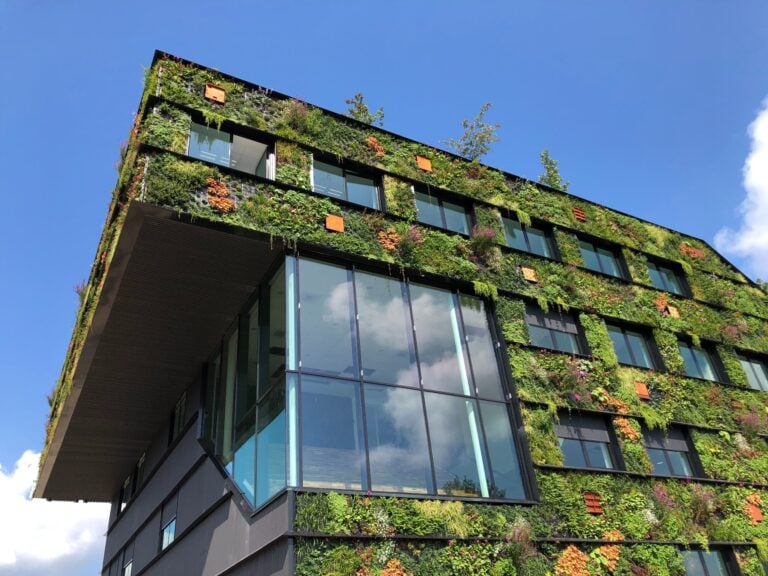4 Home Renovation Materials that are Terrible for the Planet
 Many people know the importance of sustainability, even in home renovations. Eco-friendly home renovation means consciously minimizing the negative environmental impact to promote a greener and healthier living space. This perspective helps reduce the significant role of homes in contributing to climate change, pollution, and resource depletion.
Many people know the importance of sustainability, even in home renovations. Eco-friendly home renovation means consciously minimizing the negative environmental impact to promote a greener and healthier living space. This perspective helps reduce the significant role of homes in contributing to climate change, pollution, and resource depletion.
Home renovation materials have a substantial environmental impact. Conventional materials usually contribute to greenhouse gas emissions, habitat destruction, toxic waste, and deforestation. If you want to be more sustainable, consider the lifecycle of the materials. This includes manufacturing, installation, transportation, maintenance, and eventual disposal.
Non-Biodegradable Materials
The world makes 2.01 billion tons of municipal solid waste yearly and 33% of that needs appropriate management. This shows how non-biodegradable materials do not benefit the environment, especially if decomposing takes hundreds of years.
PVC (Polyvinyl Chloride)
PVC is a plastic material commonly used in home renovation projects. It is terrible for the planet because it contains chlorine gas and petroleum-based compounds that impose health risks on workers. During PVC manufacturing, toxic emissions such as dioxins and vinyl chloride enter the atmosphere.
Dioxins are considered organic pollutants that harm human health. On the other hand, vinyl chloride is a known carcinogen. Decomposing takes hundreds of years, which can cause long-term environmental pollution if you do not recycle it properly.
Styrofoam
Also known as expanded polystyrene, styrofoam is a lightweight insulating material. Its production is heavily dependent on fossil fuels, specifically petroleum. Extracting and refining petroleum contributes to carbon emissions and the depletion of non-renewable resources.
Styrofoam is very bad for the environment because of its slow decomposition rate — it can persist for hundreds of years. The lightweight nature of this material makes it easily carryable by water or wind, which can lead to marine pollution and litter. Burning styrofoam releases polystyrene and styrene monomers, which are bad for the respiratory system and have carcinogenic properties.
Dangerous Chemicals
Many chemicals are not suitable for you, some of which are in the materials you use.
Lead-Based Paint
Lead-based paint was commonly used before it was banned in the late 1970s. It can be found in older homes, which may be the case if you renovate an old house. Those exposed to lead can experience lead poisoning, which can cause developmental delays, learning difficulties, organ damage and other long-term health problems.
Removing lead-based paint needs an expert who knows how to lessen the risk of exposure. Not appropriately removed paint can cause hazardous lead dust or contaminate the soil. Disposing of lead-based paint also requires observing specific regulations to prevent environmental contamination.
Composite Wood Products
These products include plywood, particleboard, and pressed wood. They are used for their versatility and affordability but contain formaldehyde — a volatile organic compound (VOC). Formaldehyde is considered a binding agent to hold wood particles or fibers. Over time, composite wood releases formaldehyde through a slow process known as off-gassing. This occurrence is particularly prevalent in areas that lack proper ventilation, leading to increased levels of formaldehyde indoors.
Individuals exposed to formaldehyde fumes for an extended period can experience problems with their respiratory system. They might experience coughing, wheezing and throat irritation. Those who have asthma or other existing respiratory conditions can experience worsened symptoms. Formaldehyde is also known as a human carcinogen by the International Agency for Research on Cancer.
Exposure to formaldehyde for a long time has been linked to an increased risk of some cancers. An alternative is to choose low-formaldehyde or formaldehyde-free options — examples are those labeled as “CARB compliant” or “E0.” It is also essential to have proper ventilation and proper sealing of the composite wood surfaces. Another step is to test the indoor air quality to ensure you breathe non-toxic air.
The Alternatives and Solutions
The fundamental principle to an environmentally friendly house is to repurpose materials that are already available, or find alternatives that can be recycled or naturally made. It is also important to check what materials are made of because most toxins can damage your family’s health.
Bricks and Woods
Salvaged wood can come from old furniture, discarded pallets, deconstructed buildings or discarded pallets. You can repurpose it for flooring, architectural features and furniture, adding more character to your space. At the same time, you can also reuse bricks for structural or landscaping elements, giving your place a more appealing vibe.
Vinyl
Vinyl flooring is a durable, affordable and easy-to-install alternative to other flooring options. It mimics the look of wood, stone or ceramic tiles with less maintenance. The material is environmentally friendly since it’s made from recyclable components such as bio-based or renewable substances. It can also come from plant-based resins. Vinyl is water-resistant, inhibits bacterial growth and does not harbor dust mites, promoting a healthier indoor environment.
Reclaimed Metal And Glass
Restore old metal fixtures like door handles, light fixtures or decorative accents, or make them into new designs. Glass can also be used for windows and partitions. This helps decrease the need for newly manufactured products, which minimizes energy consumption.
Ceramic Or Organic Paint
Most paints and finishes have high levels of VOCs, resulting in indoor air pollution. As alternatives, you can use ceramic or organic paint. Ceramic paint has antimicrobial protection, which makes it safer. Organic paints are made from natural, non-toxic ingredients, including bactericides, bamboo cellulose and food emulsifiers.
Sustainability At Its Finest
Exploring alternatives helps conserve natural resources. Aside from what is mentioned here, you can check solar panels, geothermal systems and wind turbines. Remember to check on how the material was made every time you buy to ensure you’re making your home renovation as eco-friendly as possible.


